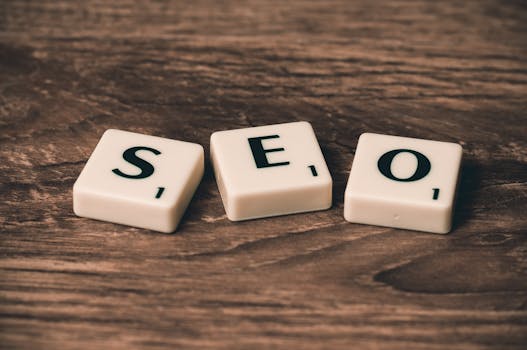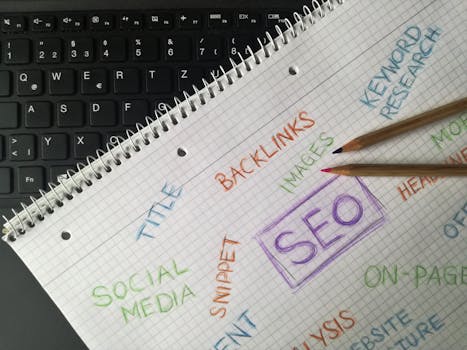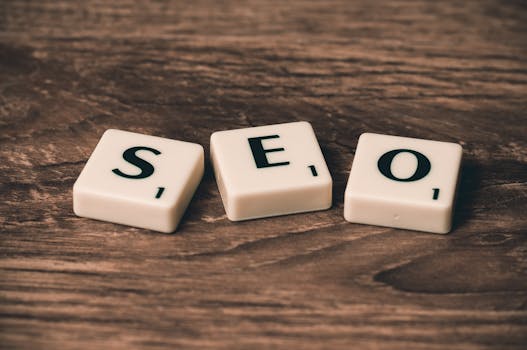The Impact of Page Load Speed on On-Page SEO Rankings
Core Web Vitals and Their Role in Page Speed
Most people believe that page speed is just a number. But I think it’s much more because it directly influences user experience and SEO rankings. Google’s Core Web Vitals—LCP, FID, and CLS—are the benchmarks we should all be focusing on.
LCP measures how quickly the main content loads. If it takes too long, users get frustrated and leave. A slow LCP can tank your SEO rankings faster than you can say ‘bounce rate.’
First Input Delay (FID) is all about interactivity. Users want to click and navigate without delay. If your site lags, they’re gone. According to the Edge of the Web, “Improving your page speed is going to help you rank higher.”
Cumulative Layout Shift (CLS) deals with visual stability. Ever clicked a button only for it to jump away? Super annoying! A poor CLS can ruin user trust and hurt your SEO.
Most resources say optimizing your host is key, but I disagree. Optimizing assets before deployment is vital. Compress images and use modern formats like WebP. You can make a huge difference without overhauling your entire infrastructure.
New tools and techniques are emerging. For example, lazy loading can help improve user experience by loading images only when they’re visible. This keeps things fast and snappy!
In conclusion, mastering Core Web Vitals is not just a trend; it’s a necessity. If you want to stay competitive, prioritize these metrics. They’re your ticket to better SEO and happier users.
The Impact of Page Load Speed on On-Page SEO Rankings
Page load speed directly influences SEO rankings. A slow-loading page frustrates users and sends them packing. I mean, who wants to wait around for a site to load? Not me!
Most people think that just having good content is enough for SEO. But I believe that if your site loads slowly, all that great content won’t matter. Users will bounce before they even see it!
According to the Edge of the Web Team, “Improving your page speed is going to help you rank higher, give your users a better experience, and improve your chances of getting that all-important conversion.” It’s that simple!
Core Web Vitals play a huge role here. These metrics—Largest Contentful Paint (LCP), First Input Delay (FID), and Cumulative Layout Shift (CLS)—are essential for assessing loading performance. Understanding these can set you apart from your competition.
Many experts suggest optimizing images and minimizing HTTP requests. But I think there’s more to it. Lazy loading is a game changer! It loads images only when they enter the viewport, improving perceived performance and keeping users engaged.
Also, caching is often overlooked. Most people believe it’s just for techies, but I think everyone should use it. Caching stores frequently accessed data, which speeds things up for users.
In a world where users expect instant gratification, site speed can make or break your SEO efforts. Don’t let slow load times ruin your chances of ranking high!
Finally, I can’t stress enough how user experience ties back to SEO. Fast-loading sites lead to happier users, and happy users are more likely to convert. So, what are you waiting for? Speed up that site!
Apr 12, 2023 … Google has stated that page speed is a ranking factor in its algorithm. The faster your website loads, the higher it will rank in search engine …
Dec 15, 2024 … Fun Fact Friday: Surprising SEO Truths Did you know that page speed can directly impact your search ranking? It's true! Google …
Priyanka Khatri on LinkedIn: #seo #onpageseo #websitetraffic …
User Experience: The Ripple Effect of Site Speed
Most people think that page load speed only affects user experience. But I believe it’s a game-changer for SEO rankings. A slow site can kill your chances of ranking high on search engines.
According to the Edge of the Web, “Improving your page speed is going to help you rank higher, give your users a better experience, and improve your chances of getting that all-important conversion.” That’s a bold statement! But it rings true in today’s fast-paced digital world.
Consider this: a one-second delay can drop conversions by 7%. That’s not just a number; it’s a huge potential loss for businesses. When users face delays, they bounce. It’s that simple.
While many focus on acquiring faster hosting, I think optimizing website assets is equally crucial. Compressing images and minimizing CSS can boost load times without hefty infrastructure changes. Lazy loading is another trick; it only loads images as they come into view, making the site feel snappier.
New topics like Utilizing Caching for Optimal Loading Speed deserve attention. Caching can drastically reduce loading times by storing frequently accessed data. This means faster access to content, which keeps users happy and engaged.
As Agency Analytics puts it, “On-page SEO focuses on optimizing elements within your website to improve search engine rankings which seamlessly translates into user experience.” If you want to keep visitors and boost your rankings, speed is non-negotiable.
… SEO issues such as broken links, slow page speeds, and mobile usability. Benchmark existing metrics to establish baseline traffic, keyword rankings, and …
Five Ways to Improve Your Site’s Ranking (SEO) | Michigan Tech
Mar 5, 2023 … … impact on rankings however you will have high bounce rates on slow sites. How many blocks are you loading on the page you are testing ? How …
How to optimize Page Speed – Ask the community – Softr Community
Apr 3, 2024 … It affects everything, from how your website ranks to your conversion rate, so having fast loading webpages is absolutely essential. In this …
Dec 22, 2023 … This means that a slow-loading website will likely rank lower in SERPs, which can negatively impact your website's traffic and revenue. The …
Common Page Speed Optimization Techniques
Here’s a straightforward list of techniques that can significantly boost your page load speed, impacting your SEO rankings positively.
- Compress images to reduce file sizes. Smaller images load faster, improving speed and user experience.
- Minimize HTTP requests by reducing the number of elements on your page. Fewer requests mean quicker load times.
- Leverage browser caching. Storing data locally speeds up subsequent page loads for returning visitors.
- Use a Content Delivery Network (CDN). CDNs distribute your content globally, ensuring faster access for users regardless of location.
- Implement lazy loading for images. This technique loads images only when they enter the viewport, speeding up initial load times.
- Defer JavaScript loading. This allows your content to load first, improving perceived performance.
- Optimize CSS delivery by inlining critical CSS. This reduces render-blocking resources, speeding up the initial display.
- Utilize static site generators. They serve pre-built HTML pages, drastically reducing server processing time.
- Regularly audit and optimize your website. Tools like Google PageSpeed Insights help identify areas for improvement.
- Prioritize visual content optimization. Ensure videos and images are compressed and appropriately sized to maintain fast load times.
Statistics Highlighting the Importance of Fast Load Times
Fast loading times are game-changers for SEO and user experience. Here’s why you should care:
- A one-second delay can reduce conversions by 7%! That’s huge for any business.
- Google prioritizes fast websites. A faster site can push you up in search rankings.
- Bounce rates soar with slow speeds. Users leave if your site takes too long to load.
- Mobile users demand speed. With mobile-first indexing, speed is more critical than ever.
- Improving load times boosts user satisfaction. Happy users are more likely to return and convert.
Techniques to Improve Page Load Speed for Better SEO
Improving page load speed is a game changer for on-page SEO. Faster sites lead to better rankings. Many believe that just having a good host is enough. But I think that’s only half the story.
Most resources suggest optimizing server performance, but optimizing your website assets is equally crucial. Compressing images, using modern formats like WebP, and minimizing CSS and JavaScript can work wonders. You don’t always need to change your hosting provider to see improvements.
Another technique that’s often overlooked is lazy loading. This means loading images and videos only when they’re about to enter the user’s viewport. It keeps the initial load light and improves perceived performance.
According to the Edge of the Web Team, “Improving your page speed is going to help you rank higher, give your users a better experience, and improve your chances of getting that all-important conversion.”
And let’s not forget about caching. Implementing caching solutions can drastically cut loading times. Storing frequently accessed data means users don’t have to wait for everything to load from scratch each time.
Many think that optimizing for mobile is enough. But I believe prioritizing visual content is key. High-resolution images need to be compressed without losing quality. This keeps your site speedy and users engaged.
As Daniel Hamilton from Zero Gravity Marketing points out, “In the age of mobile-first indexing, page speed must be at the forefront for all digital marketers.” So, let’s put speed at the top of our SEO strategies!
Key Metrics Impacting Page Load Speed
Understanding the metrics that affect page load speed can significantly enhance your on-page SEO strategy.
- A fast-loading site boosts user satisfaction. Users bounce back quickly from slow pages.
- Google considers page speed a ranking factor. Faster sites rank better in search results.
- Core Web Vitals are essential metrics. They include LCP, FID, and CLS, crucial for user experience.
- Even a one-second delay can reduce conversions by 7%! Speed is critical for retaining visitors.
- Image optimization is key. Compressed images load faster and improve overall speed.
- Minimizing HTTP requests enhances performance. Fewer requests mean quicker loading times.
- Using CDNs can drastically reduce load times. They deliver content faster by using servers closer to users.
- Implementing lazy loading can improve perceived speed. Load images as users scroll, keeping initial load light.
- Regular optimization is vital. Continually assess and improve your site speed.
Alternative Approaches to Enhancing Page Speed
Most people think that investing in a faster hosting provider is the only way to boost page speed. I believe that’s a narrow view because optimizing your website’s assets can lead to significant improvements without hefty expenses. For instance, compressing images and using modern formats like WebP can drastically reduce load times.
Many suggest that minimizing HTTP requests is key, but I argue that lazy loading can be even more effective. By loading images and videos only when they come into view, you maintain a light initial load, improving perceived performance. This approach keeps users engaged and less frustrated.
According to the Edge of the Web Team, “Improving your page speed is going to help you rank higher, give your users a better experience, and improve your chances of getting that all-important conversion.” I couldn’t agree more. It’s not just about speed; it’s about creating a seamless experience.
Let’s talk about caching. Most resources highlight its importance, but few emphasize how caching can transform your site’s performance. By storing frequently accessed data, you reduce server load and serve content faster. This can be a game changer for user experience and SEO.
Another overlooked strategy is integrating static site generators. They serve pre-built HTML pages, cutting down server demands and drastically improving load times. This method is often ignored, but it can be a secret weapon for those looking to optimize speed.
Lastly, prioritizing visual content optimization is essential. Compressing high-resolution images and videos without sacrificing quality can significantly enhance loading times. In today’s visual-centric web, this is a must-do!
How much does reducing load time impact conversion rates?
Reducing load time is a big deal for conversions. Just a one-second delay can drop conversions by 7%! That’s huge for businesses.
Many folks think that only a speedy host matters. But I believe optimizing your site’s assets is just as critical. Compressing images and minimizing CSS can work wonders without needing a new server.
According to Edge of the Web, improving page speed boosts user experience and conversion chances. If users bounce because of slow loading, you’re losing potential sales.
Let’s not forget about caching. It’s like giving your site a turbo boost! By storing frequently accessed data, you can reduce load times significantly. This not only helps with user experience but also improves your SEO.
In short, faster load times can mean more sales. Prioritize speed, and watch your conversions soar!
How does page load speed affect my website’s SEO?
Page load speed is a game changer for SEO. It directly impacts your rankings. A slow site can push you down the search results.
Many experts say that faster websites lead to better user engagement. I totally agree! According to Edge of the Web, “Improving your page speed is going to help you rank higher, give your users a better experience, and improve your chances of getting that all-important conversion.” That’s a solid point!
Some folks think investing in better hosting is the only way to boost speed. But I think optimizing your website assets can be just as effective. Compressing images and minimizing CSS can make a huge difference without breaking the bank.
Don’t forget about Core Web Vitals. These metrics—LCP, FID, and CLS—are essential for understanding your site’s performance. They give you a clear picture of how users experience your site. Master them, and you’re golden!
Lastly, let’s talk about caching. It’s a fantastic way to speed things up! By storing frequently accessed data, you can reduce server load and improve loading times significantly. It’s that simple!
Can I improve my page speed without changing my hosting provider?
Most people think that switching to a faster hosting provider is the only way to boost page speed. But I believe there are plenty of ways to improve your site without that hassle. For instance, optimizing images and using modern formats like WebP can significantly reduce load times.
Many overlook the power of caching. By storing frequently accessed data, you can serve content faster without relying on server resources every time. This approach not only speeds up loading but also enhances user experience.
Another technique is lazy loading. It delays loading images until they enter the viewport, keeping initial load times light. This method can make your site feel snappier without needing a hosting upgrade.
According to the Edge of the Web, “Improving your page speed is going to help you rank higher, give your users a better experience, and improve your chances of getting that all-important conversion.” That’s a compelling reason to focus on optimization!
So, before considering a hosting change, explore these optimization techniques. They can make a significant difference in your site’s performance!
What are Core Web Vitals?
Most people think Core Web Vitals are just buzzwords. But I believe they’re the backbone of effective on-page SEO. These metrics—Largest Contentful Paint (LCP), First Input Delay (FID), and Cumulative Layout Shift (CLS)—measure how users experience your site.
Many experts emphasize LCP as the key metric for loading performance. But I think that all three metrics are equally important. They collectively shape user satisfaction and engagement.
For instance, a slow LCP can frustrate users, causing them to bounce. According to the Edge of the Web, “Improving your page speed is going to help you rank higher, give your users a better experience, and improve your chances of getting that all-important conversion.” That’s a compelling reason to focus on these metrics!
Some argue that optimizing for Core Web Vitals requires technical expertise. But I think that even basic tweaks—like optimizing images and scripts—can yield significant improvements. It’s not just for the tech-savvy; anyone can enhance their site’s performance.
Incorporating these metrics into your strategy isn’t just smart; it’s necessary. Users expect fast, responsive sites. Ignoring Core Web Vitals means risking your rankings and conversions.
What tools can help analyze my site’s speed?
Many people swear by tools like Google PageSpeed Insights. But I think there are even better options out there. Tools like GTmetrix and Pingdom provide in-depth analysis and actionable insights to boost your page load speed.
For a comprehensive view, I recommend using WebPageTest. It offers detailed waterfall charts, showing how each element loads. This can help you pinpoint slow-loading components that need attention.
Don’t overlook browser developer tools either. They can provide real-time insights into your site’s performance. You can quickly identify issues like render-blocking resources and large images.
Another approach? Use heatmaps from tools like Hotjar. They can reveal how users interact with your site, helping you understand if speed impacts their experience. Remember, slow sites can lead to high bounce rates. You don’t want that!
As Richelle Peace from Agency Analytics said, “On-page SEO focuses on optimizing elements within your website to improve search engine rankings which seamlessly translates into user experience.” It’s that simple!
Try these tools, and watch your site speed soar!
Most people think that just having good content is enough for SEO. But I believe page load speed is a game changer. According to the Edge of the Web Team, “Improving your page speed is going to help you rank higher, give your users a better experience, and improve your chances of getting that all-important conversion.”
It’s that simple. A slow site can kill your rankings. A study shows even a one-second delay can reduce conversions by 7%!
While many focus on hosting, I think optimizing assets is key. Compressing images and minimizing files can boost speed without extra costs.
Let’s not forget Core Web Vitals. Mastering metrics like LCP and CLS can skyrocket your SEO game.
In a world where speed matters, don’t let your site lag behind!
Most people think that page speed is just a technical detail. But I believe it’s the heart of user experience. Fast pages keep users happy and engaged.
According to the Edge of the Web Team, “Improving your page speed is going to help you rank higher, give your users a better experience, and improve your chances of getting that all-important conversion.” They hit the nail on the head!
Many focus solely on hosting speed, but I argue that optimizing assets before deployment is key. Compressing images and minimizing file sizes can drastically improve load times without changing your host.
Understanding Core Web Vitals is essential too. Metrics like LCP and FID directly impact how users perceive your site. If a page feels sluggish, users will bounce.
So, let’s prioritize speed! It’s not just about numbers; it’s about creating a seamless experience for visitors.
Most folks think page load speed is just a minor detail. I believe it’s a game changer. A mere second delay can drop conversions by 7%! That’s huge.
When users wait, they get frustrated. It’s that simple. Fast sites keep users engaged and happy.
Many believe improving speed requires a new host. But I argue that optimizing assets, like compressing images, can work wonders too. Just check out the insights from Edge of the Web.
In this mobile era, mastering Core Web Vitals is crucial. They measure loading performance and interaction. Ignoring them? That’s a missed opportunity!
Most folks think a fast host is the key to speed. I say, optimizing images and cutting down HTTP requests is way more impactful. Compressing images and using modern formats like WebP can make a huge difference!
Statistics show that even a one-second delay can slash conversions by 7%. So, why not prioritize image optimization? It’s that simple!
Lazy loading is another game-changer. It speeds up initial loads by only loading images when they’re in view. This keeps users happy and engaged!
As Richelle Peace from Agency Analytics puts it, “On-page SEO focuses on optimizing elements within your website to improve search engine rankings which seamlessly translates into user experience.”
And hey, let’s not forget about caching! It can drastically reduce load times by storing frequently accessed data. It’s a must for any website aiming for peak performance.
It’s no secret: slow sites lose visitors. A mere one-second delay can slash conversions by 7%. Fast-loading pages keep users engaged.
Most people think optimizing hosting is the key. But I believe focusing on asset optimization is where the magic happens. Compress images, use modern formats, and minimize files.
According to Edge of the Web, “Improving your page speed is going to help you rank higher, give your users a better experience, and improve your chances of getting that all-important conversion.” That’s a game changer!
Don’t forget about caching! It can turbocharge your site by storing frequently accessed data. This means quicker access and happier users.
Let’s not overlook visual content. High-res images can drag you down. Optimize them to keep your site speedy. It’s that simple!

Albert Mora is an internationally renowned expert in SEO and online marketing, whose visionary leadership has been instrumental in positioning Seolution as a leader in the industry.









